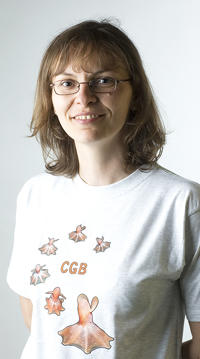Peatlands and heavy metal release and storage
Guest researcher and mineralogist Beata Smieja-Król says that peatland is only interesting when it is polluted!

Main content
Beata is just completing a three-month stay at the Centre for Geobiology (CGB) where she is testing her hypothesis that peatlands not only sequester and immobilise mineral pollutants, but they may also provide an environment that facilitates microbially mediated re-mineralisation reactions.
Beata is a researcher at the Faculty of Earth Sciences, University of Silesia in Sosnowiec, Poland. She became a peatland geobiologist almost by accident. One day a colleague gave her some samples from a local peatland to study under the electron microscope.
“I would never have thought of looking for mineral samples like that in peatland”, she says.
The preliminary images showed mineral crystals tightly bound to biological material. It made her hungry to learn more. As a result, she brought her project to CGB where geobiology specialists have both the expertise and equipment to help her to analyse the material in greater detail.
Peatlands have an interesting and important role in the sequestration of heavy metal and industrial pollutants. The pollutants become caught up in the morass of decaying organic material and are thereby removed from the ground water catchment. “Out of sight, out of mind”. But climate change and industrial expansion are disturbing peatlands that may have lain undisturbed for hundreds of years. In areas where climate change is leading to increased drought conditions, the peatlands are drying out and the dry organic material is releasing its toxic mineral load during periodic wetting. In South-eastern Asia the pressure to find useable land is leading the forced drying and rehabilitation of peatland areas releasing not only their toxic mineral load, but also vast amounts of stored CO2. The net result is that there is renewed interest in having better understanding of the science of the peatland sequestration processes.
Beata explains that there are different mineral processes on-going in peatlands. First the minerals are deposited, either from the atmosphere or from ground water / runoff sources. If the source is atmospheric, the minerals are then dissolved. Finally, and most interestingly for Beata Smieja-Król, the minerals seem to be reforming. She believes that there are both abiotic and biotic factors involved in the last two processes. Here in Bergen she has produced electron microscope image after electron microscope image showing mineral crystals tightly bound to biofilms and other organic features. She plans to undertake additional chemical investigations to learn more about the processes involved.
